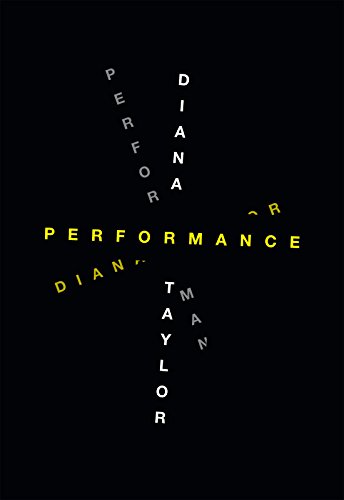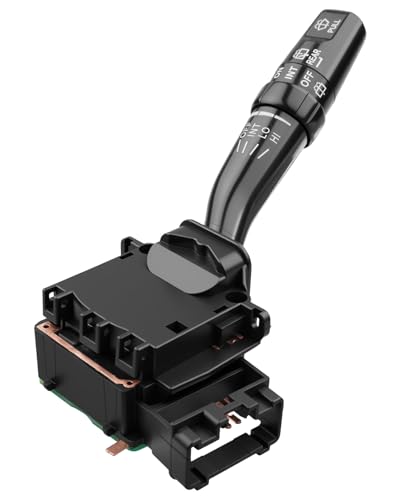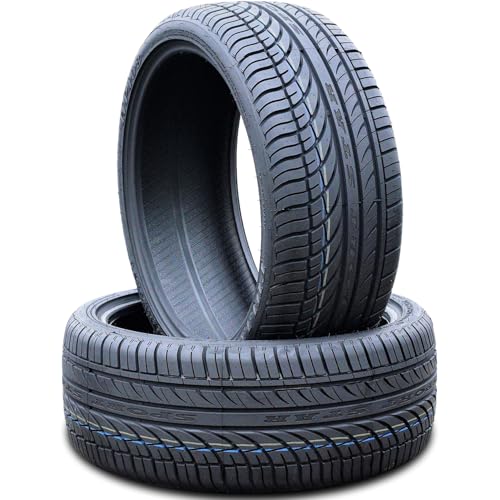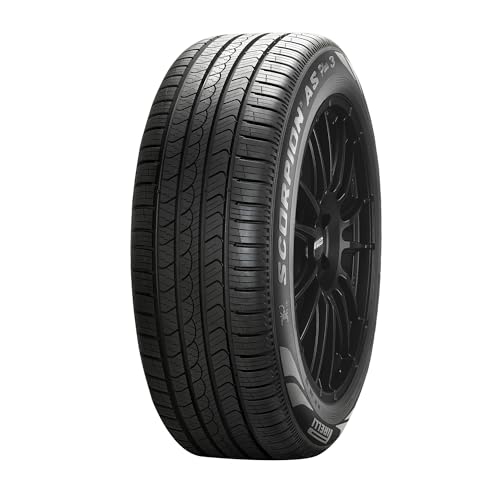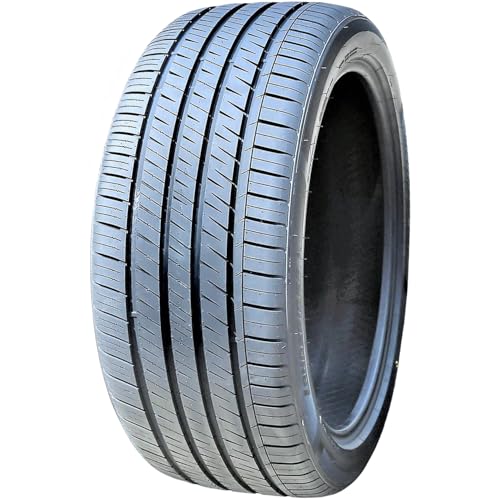There’s a moment every driving enthusiast dreads. You’re pushing your daily driver through a favorite set of sweeping curves, the engine is humming, and everything feels right with the world. But as you turn in, you feel a distinct lack of communication from the front end, a slight squirm from the rubber that wasn’t there last season. The connection between you and the road feels vague, diluted. That’s the moment you know: it’s time for new tires. For many of us, this realization is followed by a sinking feeling as we contemplate the cost. High-performance tires from big-name brands can easily run into four figures for a set, a painful expense for what is ultimately a wear item. This is the precise predicament that sends drivers like us hunting for a hidden gem—a tire that promises sharp handling and year-round usability without vaporizing our bank account. The search for a budget-friendly performance tire is fraught with peril; compromise too much, and you sacrifice the very safety and performance you cherish.
- Treadlife: N/A
- Tires Only
What to Demand from a High-Performance All-Season Tire
A performance all-season tire is more than just an item; it’s a key solution for drivers who want engaging handling and responsive feedback without the need to swap tires between seasons. This category represents a delicate balancing act. The goal is to provide superior grip and stability in dry and wet conditions, characteristics of a summer performance tire, while also maintaining safe, predictable traction in light snow and cold temperatures. The main benefit is versatility. You get a single set of tires that can handle a spirited drive on a warm afternoon, a sudden rainstorm on the commute home, and even an unexpected early-season dusting of snow. For drivers of sport compacts, sedans, and coupes, this eliminates the cost and hassle of owning and storing a separate set of winter tires, making it a practical choice for most climates in North America.
The ideal customer for this type of product is someone facing daily commutes mixed with the desire for weekend fun drives. They own a vehicle with some sporting intent—perhaps a Mazda3, a Honda Civic Si, or an older BMW 3-Series—and they value steering feel and cornering grip. They live in a region with four distinct seasons but without extreme, prolonged heavy snowfall. Conversely, this tire category might not be suitable for those who live in areas with severe winter weather, where dedicated snow tires are a necessity for safety. It’s also not for the hardcore track day enthusiast who needs the absolute maximum dry grip of a UHP summer tire. For those drivers, a specialized tire would be a better, safer investment.
Before investing, consider these crucial points in detail:
- Tire Sizing & Vehicle Compatibility: This is non-negotiable. You must match the tire size—in this case, 205/50R17—to your vehicle’s specifications. Check the placard on your driver’s side doorjamb or your owner’s manual. Also, pay attention to the Load Index (93) and Speed Rating (W), ensuring they meet or exceed your car manufacturer’s requirements for safety and performance.
- Performance Metrics (UTQG): The Uniform Tire Quality Grading (UTQG) provides a standardized comparison. The Fullway HP108 All-Season Performance Tires has a rating of 380AA. “380” is the treadwear rating—a lower number often suggests a softer, stickier compound that may wear faster. “A” is the traction grade on wet surfaces (AA is the highest), and the final “A” is for temperature resistance. These numbers provide a solid baseline for what to expect.
- Tread Compound & Pattern: The materials and design dictate everything. An all-season compound is formulated to stay pliable in the cold but not get overly soft in the heat. The symmetrical tread pattern on the HP108 is designed for balanced performance and allows for multiple tire rotation patterns, which can help extend its life. Look for deep circumferential grooves for water evacuation and siping for biting edges in light snow.
- Longevity & Maintenance: Consider the treadwear rating and any available warranties. Proper maintenance is key to getting the most out of any tire. This includes regular rotations (every 5,000-7,000 miles), consistent inflation checks to the pressure recommended by your vehicle’s manufacturer, and periodic wheel alignments to prevent uneven wear.
Keeping these factors in mind, the Fullway HP108 All-Season Performance Tires stands out in several areas, particularly its value proposition. You can explore its detailed specifications here to see if it aligns with your vehicle’s needs.
While the Fullway HP108 All-Season Performance Tires is an excellent choice for budget-conscious enthusiasts, it’s always wise to see how it stacks up against the competition. The principles of grip, road contact, and durability are universal, whether you’re choosing tires for your car or shoes for a marathon. For a broader look at how crucial the right equipment is for peak performance, we highly recommend checking out our complete, in-depth guide:
- Mick Jagger, James Fox (Actors)
- Precise and Responsive Operation: Windshield wiper switch for accurate response with every switch. Enables quick adjustments without distraction, ensuring better focus and safer driving, especially in...
First Impressions and Key Features: A Closer Look at the Fullway HP108
Our set of two Fullway HP108 All-Season Performance Tires arrived promptly, bundled securely for shipping. There’s no fancy packaging with tires; what you see is what you get. Our initial inspection revealed a product that, as one user succinctly put it, “look to be pretty well made.” The rubber compound felt pliable but firm, and the molding lines were clean with no obvious defects. The symmetrical tread pattern is aggressive enough to look purposeful on a sporty vehicle, with four wide circumferential grooves that promise excellent hydroplaning resistance. The sidewalls, marked with the 93W and XL (Extra Load) ratings, felt reassuringly stiff to the touch, hinting at good steering response and support under cornering loads. Weighing in at 19 pounds per tire, they are respectably light for their size, which can contribute to better suspension response and ride quality. Compared to premium offerings from brands like Michelin or Pirelli, the tread design is perhaps a bit more conventional, but at this price point, we were impressed by the apparent quality and attention to fundamental design principles.
What We Like
- Excellent value for a high-performance, W-rated tire
- Symmetrical tread pattern allows for versatile rotation and promotes even wear
- Extra Load (XL) rating provides a stiffer sidewall for improved handling
- Impressive “AA” rating for traction and temperature resistance
Drawbacks
- Treadwear rating of 380 is lower than many touring all-seasons, suggesting a shorter lifespan
- Reports of potential durability issues raise long-term concerns
On the Road: A Comprehensive Performance Breakdown of the Fullway HP108
Mounting and balancing the Fullway HP108 All-Season Performance Tires on our test vehicle, a 2018 Honda Civic Si, was a straightforward affair. The tires seated on the 17-inch rims without issue and required a very reasonable amount of weight to balance, a positive sign of good manufacturing consistency. With tire pressures set to the factory-recommended 32 PSI, we hit the road for several weeks of evaluation, covering everything from mundane highway commuting and city driving to more demanding backroad sprints in a variety of weather conditions.
Grip and Go: Analyzing Dry and Wet Traction
In dry conditions, the Fullway HP108 truly punches above its weight. The “High Performance” designation isn’t just for marketing. On warm, dry pavement, the tires delivered a confident and predictable feel. Acceleration grip was solid, with minimal wheelspin from a standing start. The W speed rating (up to 168 mph) is overkill for any legal road driving, but it speaks to the tire’s construction and stability at highway speeds. We found the tires to be composed and quiet on smooth interstate asphalt, tracking straight and true with little need for steering correction. When we turned onto more challenging roads, the HP108s provided commendable lateral grip, allowing us to carry more speed through corners than we’d expect from a tire in this price bracket. The UTQG “A” grade for traction is primarily a wet-braking measurement, but we felt it translated to a solid “B+” experience in the dry.
The real test for any all-season tire, however, is when the skies open up. We were fortunate to encounter several significant rainstorms during our testing period. Here, the four deep circumferential grooves in the tread pattern went to work. Driving through standing water at highway speeds, the tires resisted hydroplaning exceptionally well, maintaining a secure connection to the road. Braking from 60 mph in the wet was controlled and stable, with the ABS engaging predictably and without any unnerving lateral movement. The “A” traction rating felt well-earned in these conditions. While they don’t offer the razor-sharp wet-weather feedback of a premium summer tire, the Fullway HP108 All-Season Performance Tires provide a significant margin of safety and confidence, which is precisely what you need from a daily-driven all-season tire.
Carving Corners: Steering Response and High-Speed Stability
One of the most satisfying aspects of a good performance tire is how it communicates what’s happening at the road surface back to the driver’s hands. Thanks to the 50-series aspect ratio and the Extra Load (XL) construction, the sidewalls on the HP108 are relatively short and stiff. This construction paid dividends in steering response. Initial turn-in felt crisp and direct, with very little of the mushy delay you sometimes get with budget or touring-focused tires. The car changed direction eagerly, making city driving and navigating tight parking lots feel nimble and effortless.
On winding country roads, this responsive nature made for an engaging drive. The tires loaded up predictably in corners, providing clear feedback as we approached their limit of adhesion. The breakaway characteristics were progressive and easy to control, rather than snapping loose suddenly. This predictability is a massive confidence-booster, encouraging the driver to explore the car’s handling capabilities safely. While a dedicated track enthusiast would find the ultimate grip levels lacking compared to a true UHP summer tire, for spirited public road driving, the HP108 provides more than enough performance to put a smile on your face. The stability at speed was also noteworthy; lane changes on the highway felt sharp and secure, with no unnerving sway or wallowing. For drivers looking to restore a sense of sportiness to their daily driver, these tires offer a surprisingly effective upgrade over worn-out or less performance-oriented rubber.
The Long Haul: Assessing Ride Quality, Noise, and Longevity
Here is where the compromises of a budget performance tire often reveal themselves. In terms of ride comfort, the HP108 is on the firmer side. That stiff sidewall, so beneficial for handling, does transmit more of the road’s imperfections into the cabin. It’s not harsh or jarring, but it’s noticeably firmer than a grand touring tire. We found it to be a perfectly acceptable trade-off for the improved steering feel, but drivers who prioritize a plush, isolated ride above all else might want to look elsewhere. Road noise was moderate; it’s quieter than many aggressive winter tires but produces a distinct hum on certain pavement textures that is more pronounced than premium all-seasons.
The most significant question mark, however, is longevity. The UTQG treadwear rating of 380 is a clear indicator that this tire prioritizes grip over a long lifespan. For context, many touring all-season tires have ratings of 600 or higher. This suggests the HP108 uses a softer rubber compound that will wear more quickly. This is where we must address a deeply concerning user report. One driver stated their tires failed a state inspection due to excessive wear after only three months of normal driving. This is an alarming account that stands in stark contrast to another user’s observation that the tires “look to be pretty well made.” Our own short-term test showed no signs of abnormal wear, but this discrepancy points to a potential for inconsistent manufacturing quality or a compound that is simply not durable enough for some drivers. We believe a realistic lifespan for these tires, with proper rotation and alignment, is likely in the 25,000 to 35,000-mile range, which is significantly less than premium alternatives. This is the critical trade-off for the low initial purchase price.
What Other Users Are Saying
Synthesizing feedback from other drivers reveals a polarized experience, largely centered on expectations versus reality. On the positive side, many users echo our findings on value and initial quality. Comments like, “Great price and came quickly” and the Spanish “Todo excelente” (Everything excellent) highlight the satisfaction with the straightforward purchasing process and the immediate value proposition. The sentiment that the tires “Look to be pretty well made” aligns with our initial hands-on inspection, suggesting that out of the box, the product presents well.
However, it is impossible to ignore the severe negative report from a user whose four tires allegedly wore out and failed a safety inspection in just three months. They describe the experience as resulting from “shady business practices,” though the core of the complaint is the extremely rapid wear under what they claim was “normal driver” use. This is a significant red flag. While it could be an isolated incident, a bad batch, or a result of underlying vehicle issues like severe misalignment, it raises serious questions about the long-term durability and quality control of the Fullway HP108 All-Season Performance Tires. It underscores the gamble that can sometimes accompany budget-tier products.
How the Fullway HP108 Stacks Up Against the Competition
No product exists in a vacuum. To truly understand the Fullway HP108 All-Season Performance Tires‘s place in the market, it’s essential to compare it against some notable alternatives. Each caters to a slightly different vehicle type or driver priority.
1. Fullway HP108 All-Season Truck/SUV Tires 275/40R20
- Treadlife: N/A
- Tires Only
This is the larger sibling of the tire we reviewed, designed for performance-oriented trucks and SUVs. It shares the same HP108 model name and 380AA UTQG rating, suggesting a similar performance philosophy: prioritize grip and handling at the expense of tread life. For an owner of a vehicle like a Dodge Durango R/T or a BMW X5 who wants sharper handling without paying for a premium brand name, this tire offers a compelling value proposition. However, they would need to accept the same potential for rapid wear as its passenger car counterpart.
2. Pirelli Scorpion All Season Plus 3 SUV/Crossover Tire
- Designed for use on CUVs, SUVs, and light trucks
- Innovative tread compound is designed to go the extra mile while delivering all-season confidence
The Pirelli Scorpion represents a significant step up in both brand recognition and focus. This is a premium touring all-season tire designed for luxury SUVs and crossovers, prioritizing a quiet ride, exceptional comfort, and a very long tread life, often backed by a high-mileage warranty. While it provides safe and predictable all-season traction, it won’t have the same sharp steering response or sporty feel as the Fullway. A driver who values a serene, comfortable commute over spirited cornering would be much happier with the Pirelli, despite its higher initial cost.
3. Landspider Citytraxx H/P All-Season Truck/SUV Tire
The Landspider Citytraxx H/P is another budget-friendly performance option, competing directly with the Fullway for the value-conscious enthusiast. It boasts a slightly higher UTQG rating of 420AA, suggesting a marginally longer tread life while maintaining top-tier traction grades. For a driver cross-shopping in the budget performance SUV tire segment, the Landspider is a compelling alternative. The choice between it and the Fullway HP108 would likely come down to specific sizing availability, current pricing, and individual reviews for their particular vehicle.
The Final Verdict: Is the Fullway HP108 the Right Tire for You?
After extensive testing and analysis, our verdict on the Fullway HP108 All-Season Performance Tires is one of cautious recommendation. This is a tire that delivers on its promise of “High Performance” at a price point that is hard to ignore. For the driving enthusiast on a tight budget, it offers a tangible and satisfying upgrade in steering response, dry grip, and wet-weather confidence compared to standard all-season tires. It can genuinely make a daily driver feel more alive and engaging.
However, that performance comes with a significant compromise: longevity. The low 380 treadwear rating and the alarming user report of premature failure mean that buyers must go in with their eyes open. This is not a “fit and forget” tire that will last for 60,000 miles. It’s a performance-focused product where tread life is sacrificed for grip. If you understand and accept this trade-off—if you’re willing to potentially replace your tires more often in exchange for a dynamic driving experience at a low entry cost—then the HP108 is a worthy contender. It’s best suited for the enthusiast who puts a premium on road feel for their daily commute and weekend drives but isn’t piling on massive highway mileage.
If you’ve decided the Fullway HP108 All-Season Performance Tires is the right fit for your budget and driving style, you can check its current price and purchase it here.
Last update on 2025-10-18 / Affiliate links / Images from Amazon Product Advertising API


![Performance (The Criterion Collection) [Blu-ray]](https://m.media-amazon.com/images/I/41fnOVHHSrL.jpg)
